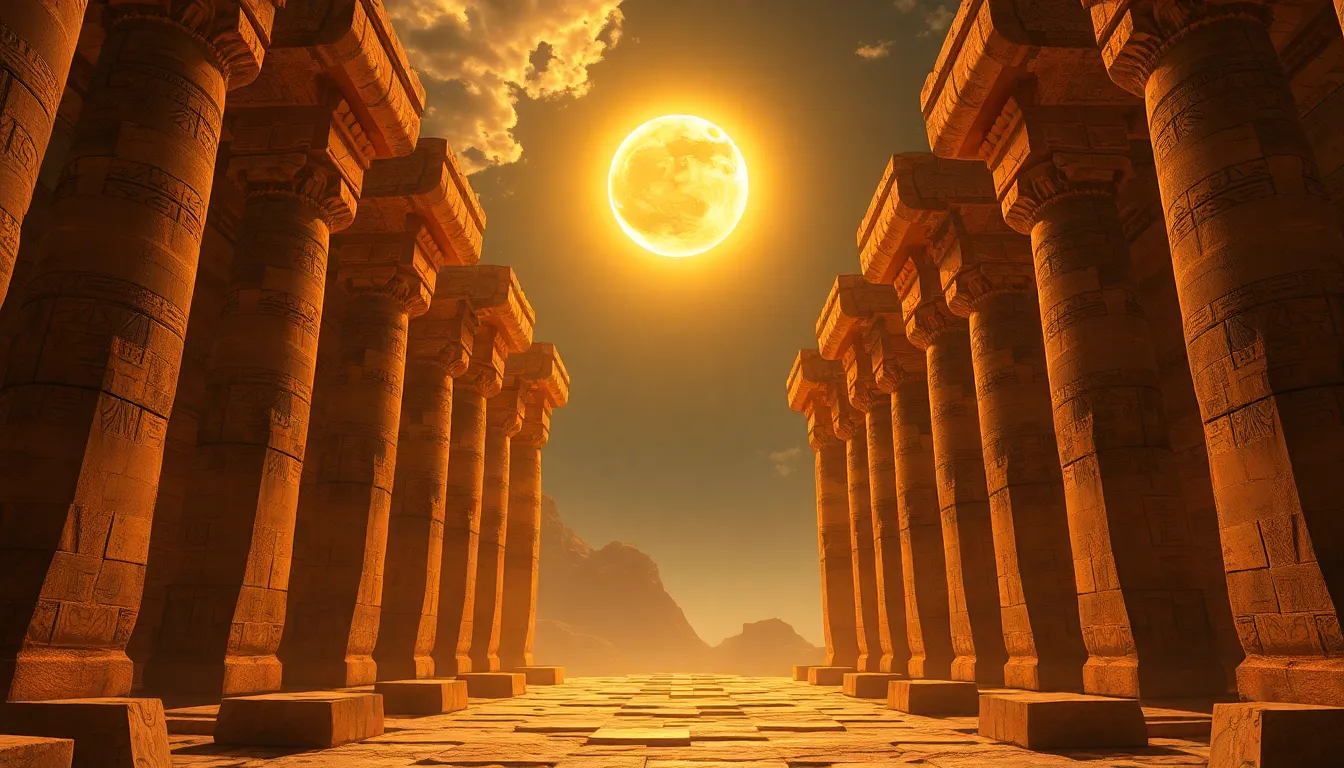The Myths of Ra: The Sun God’s Daily Journey
I. Introduction to Ra: The Sun God of Ancient Egypt
Ra, one of the most significant deities in ancient Egyptian mythology, was revered as the Sun God and the creator of all life. His importance in Egyptian culture cannot be overstated; he was seen as a symbol of light, warmth, and growth. The daily rising and setting of the sun were not merely astronomical events but were imbued with deep spiritual significance that shaped the Egyptian worldview.
The sun’s vital role in agriculture, timekeeping, and navigation made Ra central to the Egyptians’ daily lives and spiritual practices. He was often depicted as a falcon-headed man, crowned with a sun disk, embodying the essence of the sun itself.
II. The Birth of Ra: Creation Myths
Ra’s origin is steeped in various creation myths, primarily focusing on his emergence from the primordial waters of Nun. According to these myths, Nun represented chaos and the void before creation. Ra arose from this endless expanse, symbolizing the birth of order and the establishment of the cosmos.
Different versions of Ra’s creation story exist, including:
- In some accounts, Ra created himself through an act of will.
- Other myths state that he emerged from a lotus flower that bloomed in the waters of Nun.
- Some narratives include other deities, such as Atum, who created Ra to bring light to the world.
III. Ra’s Daily Journey Across the Sky
Ra’s journey across the sky is one of the most celebrated aspects of his mythology. Each day, he traveled in his solar barque, a magnificent boat that carried him from the eastern horizon at dawn to the western horizon at dusk. This journey was not only a physical traversal but also a representation of life, death, and rebirth.
The sun cycle held profound symbolism in ancient Egyptian beliefs, including:
- Morning: The dawn marked the triumph of light over darkness.
- Noon: Ra was at his most powerful, showering the earth with life-giving sunlight.
- Dusk: The setting sun represented the end of the day and the transition into the unknown.
IV. The Underworld and Ra’s Nocturnal Journey
At night, Ra’s journey took a darker turn as he descended into the underworld, known as Duat. This realm was believed to be filled with dangers and trials that Ra had to face to ensure the sun would rise again. The nightly journey was essential for the regeneration of the sun and the renewal of life.
The significance of the Duat included:
- The underworld represented a place of transformation and renewal.
- Ra faced various trials, including battles against serpents and other deities.
- His successful navigation through Duat symbolized victory over chaos and darkness.
V. The Companions of Ra: Deities and Mythical Creatures
Throughout his journey, Ra was accompanied by various deities and mythical creatures that played crucial roles in supporting him. Key figures included:
- Ma’at: The goddess of truth and order, who ensured balance in the universe.
- Sekhmet: The lioness goddess who represented the fierce aspect of Ra’s power and protection.
- Horus: The sky god often associated with kingship and protection.
The solar barque itself was a significant entity, believed to carry not only Ra but also the souls of the deceased, guiding them through the afterlife.
VI. The Myth of Ra and His Battles
Ra’s mythology is not complete without mentioning his eternal struggle against the serpent Apep (or Apophis), the embodiment of chaos and darkness. Apep’s attempts to devour Ra each night were symbolic of the constant battle between light and darkness.
The symbolism of this struggle included:
- Light versus darkness represented the eternal fight for order in the cosmos.
- Ra’s victories over Apep reaffirmed his role as the creator and sustainer of life.
- The myths surrounding these battles were often recited and reenacted in rituals to ensure Ra’s strength and the sun’s return each day.
VII. Cultural Interpretations and Legacy of Ra
Ra’s influence on ancient Egyptian culture extended beyond religion; he played a vital role in art, architecture, and literature. Temples dedicated to Ra, such as the Temple of Karnak, showcased intricate carvings and paintings depicting his solar journeys and battles.
Throughout different dynasties, Ra’s worship evolved, adapting to the changing political and spiritual landscape of Egypt. His legacy was reflected in:
- The fusion of Ra with other deities, such as Amun-Ra, illustrating his integration into the broader pantheon.
- Literary texts, including the Pyramid Texts, which include spells and hymns dedicated to Ra.
- Artistic representations that emphasize his importance in the daily life and afterlife of the Egyptians.
VIII. Conclusion: The Enduring Legacy of Ra’s Myths
Ra’s myths encapsulate the essence of ancient Egyptian beliefs regarding life, death, and the natural world. His significance as the Sun God is a reflection of the vital role the sun played in the lives of the ancient Egyptians.
Today, the myths of Ra continue to resonate in contemporary discussions of mythology and religion, illustrating the timeless nature of these ancient stories. The legacy of Ra serves as a reminder of humanity’s enduring quest to understand the cosmos and our place within it.




